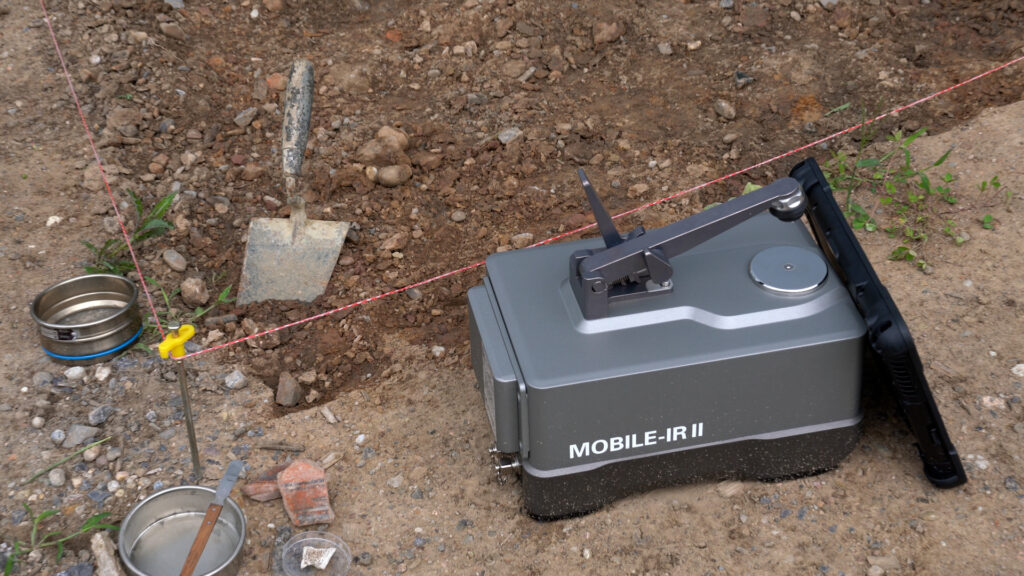Ancient bone FTIR analysis helps Archaeologists to determine which bones to take to the lab with them for further analysis. Want to know why and how?
Bones are a rich source of information about past populations. It can tell Archaeologists about diets, plagues, and genetic relations. For analyses such as radiocarbon dating, DNA analysis or isotopic studies the bones, however, must be in good condition.
The issue is that shortly after death the body starts to undergo degradation. This is due to environmental conditions such as temperature fluctuations, humidity levels, and microbial activity in the burial environment. Unfortunately this degradation can strongly change a bones composition thus making it difficult to extract reliable data from it.
But how can scientists avoid sending material from an excavation to the lab that is too strongly altered? The best option is to use a portable FTIR spectrometer that can determine the grade of alteration directly on-site!

Determination of bone preservation
Bones are made up of a many different components. The most important ones being the collagen, a group of structural proteins, and the mineral bioapatite, a form of calcium phosphate. Both can be easily identified in the FTIR spectra of (ground) bone samples.
Interestingly, organic collagen decays much faster than mineral bioapatite. That’s why the ratio between the two can provide an indication of how well preserved a found bone sample is. Higher values indicate a good condition of the bone, while lower values indicate a poor degree of preservation.
Let’s take a look at an example! Here we have analyzed two unidentified bones from an excavation site with the MOBILE-IR II. The MOBILE-IR II is an excellent choice for this type of analysis as it is not only portable but also provides laboratory quality results in difficult field conditions.

For the analysis, a small fraction of the bones was milled and placed on the ATR crystal. A minute later, the results are in.

The FTIR spectrum of bone A only shows a weak, broadened collagen peak but a strong and sharp phosphate peak. In contrast, bone B shows a significant collagen peak, and a strong, slightly broadened phosphate peak.
This strongly suggests, that the second bone sample is much better preserved and the likelihood of it yielding sufficient results in DNA or isotopic analysis is much higher than in the other bone.
Conclusion
Using portable FTIR spectroscopy on-site allows archaeologists to evaluate bone preservation by measuring the collagen-to-bioapatite ratio. This technique helps determine which bones are in the best condition for further lab analysis, reducing the risk of working with degraded samples.
By doing so, it enhances the reliability of subsequent studies, such as radiocarbon dating and DNA analysis, and ensures that researchers can obtain accurate and meaningful information about ancient populations. This method not only improves the efficiency of archaeological research but also ensures the integrity and quality of the data collected from ancient bones.
Do you want to know more about how FTIR can aid in your archeological work? Have a look at this article about prehistoric paint:








